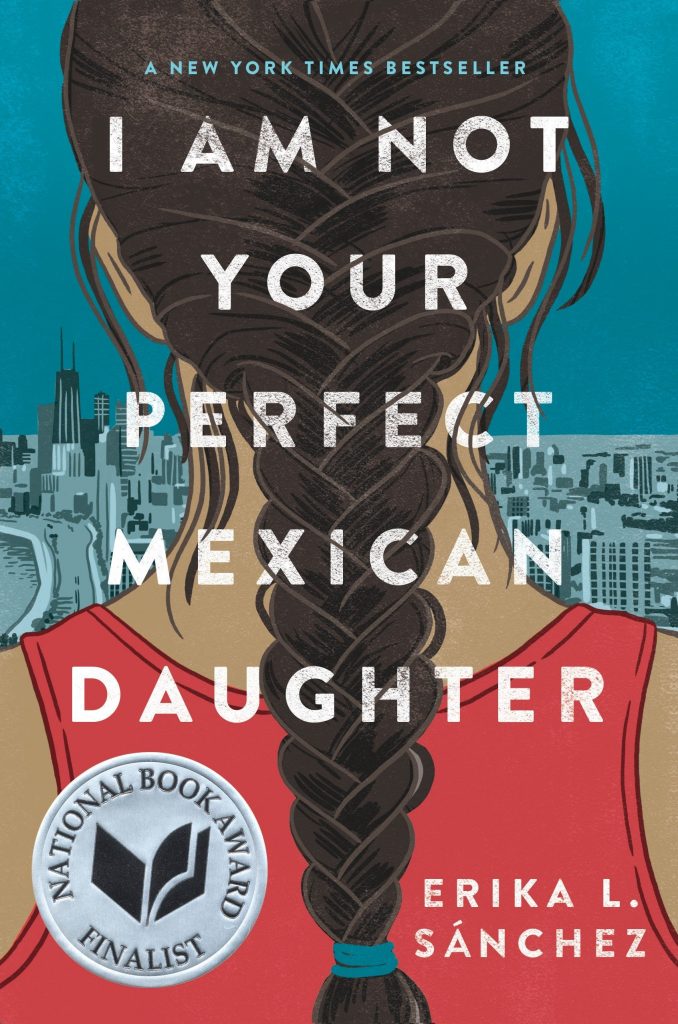“How do we tie our shoes, brush our hair, drink coffee, wash the dishes, and go to sleep, pretending everything is fine? How do we laugh and feel happiness despite the buried things growing inside? How can we do that day after day?”
Over the summer, I read lines like this from I’m Not Your Perfect Mexican Daughter by Erika L. Sánchez. This book, published in 2017, follows the young protagonist Julia as she deals with the death of her older sister, Olga, who is deemed the perfect Mexican daughter by Julia and their mother. Olga, however, has many secrets that Julia attempts to uncover.
Although at its heart this novel is a mystery with Julia trying to determine the extent of Olga’s lies to her family, it is also a novel that focuses on gender in relation to Mexican culture. In relation to being a young Mexican woman, Julia is often expected to dress modestly, help her mom with domestic chores, stay home, and to stay away from boys before marriage. These are the qualities that her perfect Mexican sister Olga possessed before she died.
Being a white woman reading this novel, I felt extremely honored to know the stories of an Hispanic author about Hispanic characters. Although a lot of the ethnic territory that was visited in the novel was quite foreign to me, Julia’s experiences in being a woman and the expectations that are placed on her made me feel completely drawn to her as a character.
I think that it is easy for me to gravitate to authors and main characters that relate to me, but I find it more important to challenge myself to read outside of my comfort zone.
Before coming to college, I think I read maybe two or three books in school by authors who were not white men. I might be a few books off in my estimation, but overall, I seldom read books that were not by white men. I think that the lack of diversity in classroom literature aided in my assumption that there were no books out there with characters that looked like me, a white woman, let alone women of color.
When I came to college, however, I took classes like Postcolonial Women’s Novels, Global Fiction, Literature of Women and Young Adult Literature, allowing me to see that there are more books out there that do not fit into this white man norm.
However, I was then faced with the internal dilemma when I went into bookstores. I was still assimilated to read books by white men, the norm from my upbringing, but I then started to consciously think about what I was reading. Who was a I supporting? What character was I about to follow? I started to sit on the floors of Barnes and Noble, Books-A-Million, and many secondhand book stores navigating these questions as I sifted through the books that I read synopses of. After liking what the book was about, I looked to the author. Where are they from? How do they identify? This lead me to delete books that were of more privileged voices. I did not automatically think that their stories were not good or did not need to be told, I just felt that as a marginalized person myself, I should be supporting other marginalized authors.
Last summer, I read 10 books. All of the books were either by a woman, a woman of color, or a man of color. I consciously think about who I support when buying books. I still think that I have a long way to go in supporting marginalized voices, but I think that any step in being more aware is important.
Source: Goodreads

